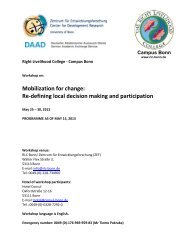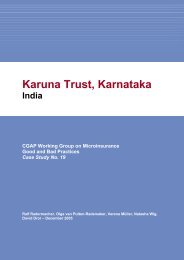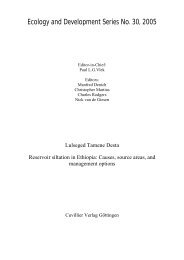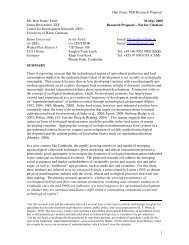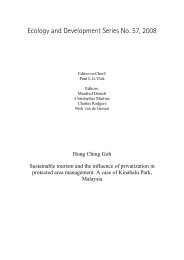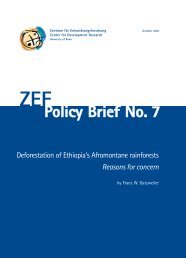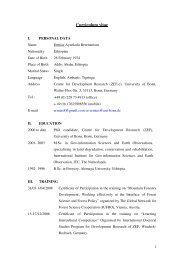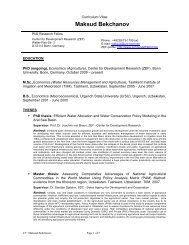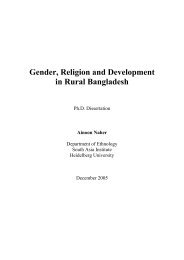Ecology and Development Series No. 10, 2003 - ZEF
Ecology and Development Series No. 10, 2003 - ZEF
Ecology and Development Series No. 10, 2003 - ZEF
- No tags were found...
Create successful ePaper yourself
Turn your PDF publications into a flip-book with our unique Google optimized e-Paper software.
Floristic analysis of the undisturbed forestcharacteristic species of both the Afromontane <strong>and</strong> the transitional rain forests wererecorded in this study. The list of plant species belonging to the transitional rain forestincludes Aningeria altissima, Celtis zenkeri, Dracaena fragrans, Elaeodendron buchananii,Eugenia bukobensis, Ficus exasperata, Phoenix reclinata, Trichilia dregeana, Trilepisiummadagascariense, <strong>and</strong> Vepris dainelli. Characteristic plant species of the Afromontane rainforest that are also either endemic or near-endemic to the Afromontane region recorded inthis study are Apodytes dimidiata, Bersama abyssinica, Canthium oligocarpum,Cassipourea malosana, Coffea arabica, Galiniera saxifraga, Millettia ferruginea, Oleacapensis ssp. hochstetteri, Olea capensis ssp. welwitschii, Polyscias fulva, Prunus africana,Psychotria orophila, Ritchiea albersii, Schefflera abyssinica, <strong>and</strong> Teclea noblis.From its species composition, climatic conditions <strong>and</strong> topographic position, Yayuforest can best be described as a transitional rain forest. Transitional rain forest occurs onthe mountain escarpments, mainly in river valleys <strong>and</strong> at areas of high water table ataltitudes of 500-1500 m. The climatic conditions of Yayu forest (Chapter 3.1.4) are alsoquite similar with that of transitional rain forest (Friis 1992 <strong>and</strong> Chapter 2.1.1, B). Twogroups or community types: the Argomuellera macrophylla (Group 2) <strong>and</strong> the Dracaenafragrans (Group 3) are more dominated by characteristic species of the transitional rainforest <strong>and</strong> the dry peripheral semi-deciduous Guineo-Congolian forest than the Coffeaarabica group. The two groups are also relatively at lower altitude <strong>and</strong> close to Geba river.With increase in altitude <strong>and</strong> distance from Geba river, however, dominance of thecharacteristic species of the Afromontane forest type increases, like the case of the C.arabica group. The lesson learnt from this result regarding the ecological distribution ofcoffee is that in areas where the slope is gentle, <strong>and</strong> it is within the geographic <strong>and</strong> climaticrange of the species, maximum density of stems can be expected at altitude of about 1500m.4.4.3 Implications for the conservation of the Yayu forestDemel et al. (1998) suggested Yayu forest as one of the potential forest areas for in situconservation of the wild C. arabica populations in Ethiopia. The findings of this studysupport the proposition that Yayu forest is an important keystone forest ecosystem for the62



